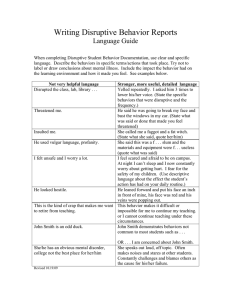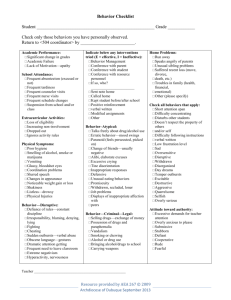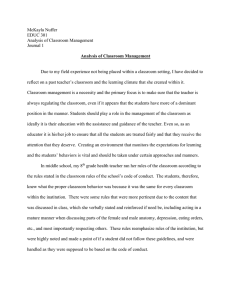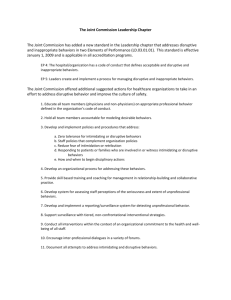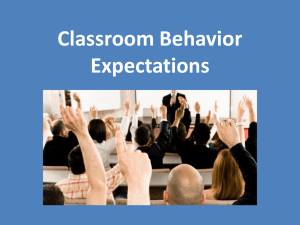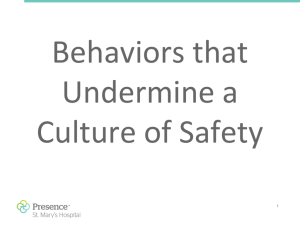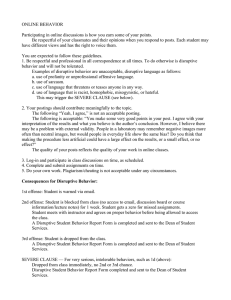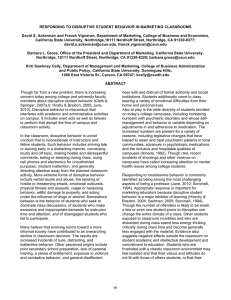RESPONDING TO DISRUPTIVE OR THREATENING STUDENT BEHAVIOR
advertisement
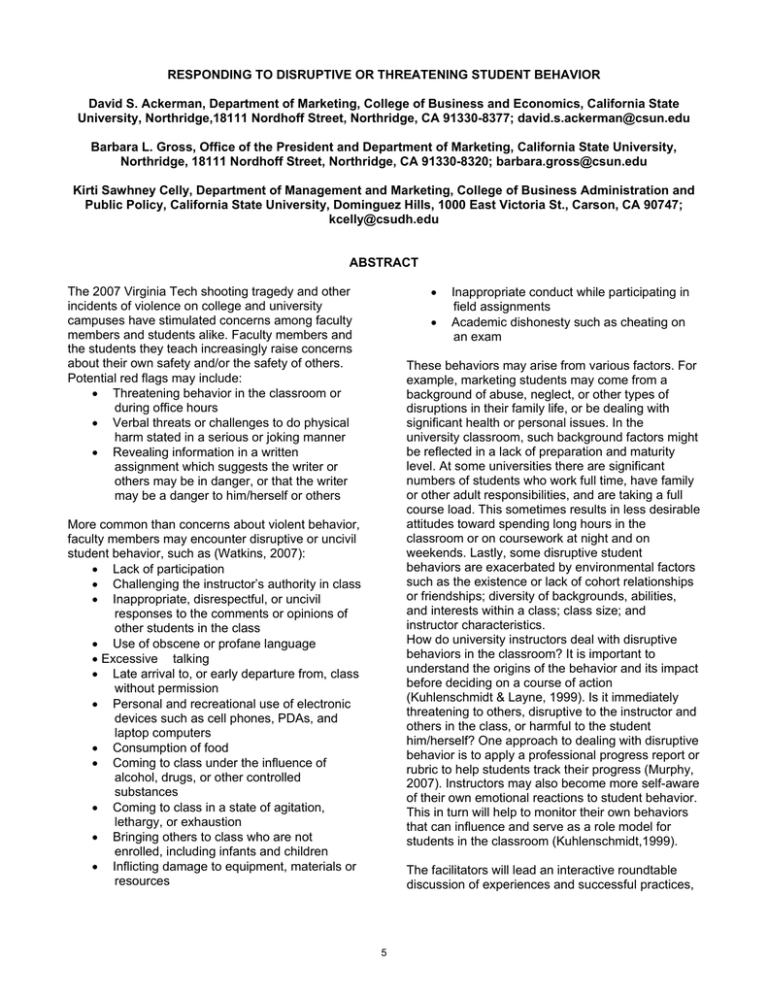
RESPONDING TO DISRUPTIVE OR THREATENING STUDENT BEHAVIOR David S. Ackerman, Department of Marketing, College of Business and Economics, California State University, Northridge,18111 Nordhoff Street, Northridge, CA 91330-8377; david.s.ackerman@csun.edu Barbara L. Gross, Office of the President and Department of Marketing, California State University, Northridge, 18111 Nordhoff Street, Northridge, CA 91330-8320; barbara.gross@csun.edu Kirti Sawhney Celly, Department of Management and Marketing, College of Business Administration and Public Policy, California State University, Dominguez Hills, 1000 East Victoria St., Carson, CA 90747; kcelly@csudh.edu ABSTRACT The 2007 Virginia Tech shooting tragedy and other incidents of violence on college and university campuses have stimulated concerns among faculty members and students alike. Faculty members and the students they teach increasingly raise concerns about their own safety and/or the safety of others. Potential red flags may include: • Threatening behavior in the classroom or during office hours • Verbal threats or challenges to do physical harm stated in a serious or joking manner • Revealing information in a written assignment which suggests the writer or others may be in danger, or that the writer may be a danger to him/herself or others • • Inappropriate conduct while participating in field assignments Academic dishonesty such as cheating on an exam These behaviors may arise from various factors. For example, marketing students may come from a background of abuse, neglect, or other types of disruptions in their family life, or be dealing with significant health or personal issues. In the university classroom, such background factors might be reflected in a lack of preparation and maturity level. At some universities there are significant numbers of students who work full time, have family or other adult responsibilities, and are taking a full course load. This sometimes results in less desirable attitudes toward spending long hours in the classroom or on coursework at night and on weekends. Lastly, some disruptive student behaviors are exacerbated by environmental factors such as the existence or lack of cohort relationships or friendships; diversity of backgrounds, abilities, and interests within a class; class size; and instructor characteristics. How do university instructors deal with disruptive behaviors in the classroom? It is important to understand the origins of the behavior and its impact before deciding on a course of action (Kuhlenschmidt & Layne, 1999). Is it immediately threatening to others, disruptive to the instructor and others in the class, or harmful to the student him/herself? One approach to dealing with disruptive behavior is to apply a professional progress report or rubric to help students track their progress (Murphy, 2007). Instructors may also become more self-aware of their own emotional reactions to student behavior. This in turn will help to monitor their own behaviors that can influence and serve as a role model for students in the classroom (Kuhlenschmidt,1999). More common than concerns about violent behavior, faculty members may encounter disruptive or uncivil student behavior, such as (Watkins, 2007): • Lack of participation • Challenging the instructor’s authority in class • Inappropriate, disrespectful, or uncivil responses to the comments or opinions of other students in the class • Use of obscene or profane language • Excessive talking • Late arrival to, or early departure from, class without permission • Personal and recreational use of electronic devices such as cell phones, PDAs, and laptop computers • Consumption of food • Coming to class under the influence of alcohol, drugs, or other controlled substances • Coming to class in a state of agitation, lethargy, or exhaustion • Bringing others to class who are not enrolled, including infants and children • Inflicting damage to equipment, materials or resources The facilitators will lead an interactive roundtable discussion of experiences and successful practices, 5 and share some best practices gleaned from student affairs and education literature. Discussion will emphasize the importance of setting and communicating standards, personally modeling the behaviors students are expected to exhibit, firmly and fairly addressing disruptive behavior, and holding students accountable. Additionally, the facilitators will share information obtained from police on dealing with active shooter situations. Murphy, K. L. (2007).A professional code of ethics and progress report: One university’s approach to addressing disruptive behaviors in the classroom. Journal of Physical Education, 78(February), 49-55. Watkins, W. (2007), Responding to disruptive or threatening student behavior: A guide for faculty. Northridge, CA: California State University, Northridge, Office of the Vice President for Student Affairs. Retrieved on October 16, 2009 from http://www.csun.edu/studentaffairs/pdfs/respondi ng_to_disruptive_students_jan2007.pdf. REFERENCES Kuhlenschmidt, S. L. (1999).Promoting internal civility: Understanding our beliefs about teaching and students. New Directions for Teaching and Learning,77(Spring), 13-22. Kuhlenschmidt, S. L. & Layne, L. E. (1999).Strategies for dealing with difficult behavior. New Directions for Teaching and Learning,77(Spring), 45-57. 6
